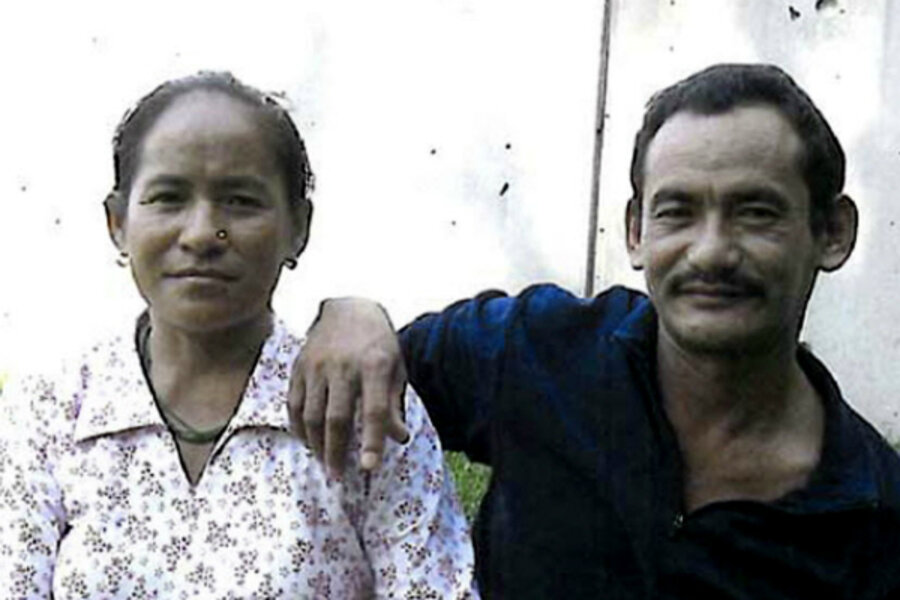Enough media attention for Dr. Kermit Gosnell murder trial?
Loading...
| Los Angeles
The murder trial of Dr. Kermit Gosnell is as grisly as it gets. The Philadelphia abortion doctor is charged with the deaths of seven babies and one woman. But the trial, in its fifth week, is making headlines now because of an ongoing war of words over how the trial itself is being covered in the mainstream media.
Conservative commentators have lambasted liberal news sources for what they call a culture of ignoring unpleasant facts about abortion, while liberal news sources respond that conservatives have done no better and are only drawing attention to the case now in hopes of bolstering anti-abortion sentiment.
Whether the charges are true, The New York Times, as well as Fox, MSNBC, the Washington Post, and other major news outlets have since increased their presence at and coverage of the Gosnell trial. The criticism had been percolating in the blogosphere for weeks before landing full force in traditional media when commentator Kirsten Powers, who often represents the left on Fox News, lashed out last Thursday in a USA Today column at what she dubbed a "media blackout" of the case.
The fracas has become a study in the power of social media to promote an issue, but more important, it reinforces a culture of division that makes compromise on critical issues ever more challenging, says Ron Bishop, professor of culture and communication at Drexel University.
"Polarized is the new normal," he says.
According to a timeline presented in a Slate article posted late Monday night, the pressure began with a twitpic from PhillyBurbs.com columnist J.D. Mullane. On April 11, he noticed the largely empty media gallery in the courtroom and tweeted and then retweeted a cellphone snapshot of the empty chairs.
The social media pot was further stirred by Operation Rescue’s Troy Newman. In an effort to break what he dubbed the “Gosnell media blackout,” the anti-abortion activist launched a Twitter and Facebook campaign, leading to more than 100,000 tweets that included graphic descriptions, taken from the grand jury report, of “severed feet in jars” and “urine stench" at the clinic.
“We are going to make 'new media' work on behalf of Kermit Gosnell's innocent, helpless victims,” Mr. Newman wrote on his Facebook posting.
The New York Times and the Washington Post, among others, responded to the charges immediately. On Monday, Times public editor Margaret Sullivan noted that the paper published “a thorough setup piece” when the trial began on March 19. She also dismissed the notion that the paper is part of a “vast, left-wing conspiracy” to ignore the trial because it may threaten abortion rights.
But numerous outlets from the Times to the Post say further coverage is warranted.
It is worth noting that the judge in the case has issued a gag order on the proceedings, and no cameras are allowed in the courtroom.
Abortion-rights activists suggest the conservative narrative is disingenuous at best.
“What Gosnell did was illegal and immoral and has nothing to do with legitimate abortion health care,” says Carol Tracy of the Philadelphia Women’s Law Project. If this case leads to more restrictions on access to safe and legal abortion, she notes, “there will be more victims like this because history tells us that women who want abortions will get them, and the only question is how safe and healthy will they be.”
The conservative charge that the media have ignored the trial is hypocritical, says Jodi Jacobson, editor in chief of RH Reality Check, a daily source for news, commentary, and analysis on sexual and reproductive health issues. “With a few exceptions, the conservative media has not been on this story either,” she says, adding that her team of eight has published at least 20 stories since the trial began and has followed it closely since 2011, when the grand jury issued its report.
When the grand jury findings were issued two years ago, mainstream media from The New York Times on down covered the report, Ms. Jacobson says. What the conservative commentators are missing is that abortion rights forces have been at work to shut Gosnell down for years. “He is a rogue doctor that has nothing to do with real abortion services,” she says. If conservatives want to criticize media whose editorial positions favor abortion rights, “they need to do their homework,” Jacobson says.
But the facts of the case should command coverage, says anti-abortion activist Dana Cody, president of Life Legal Defense Foundation in Napa, Calif. Her goal is to overturn Roe v. Wade, the 1973 US Supreme Court decision making abortion legal for the first trimester of a pregnancy. In the Gosnell case, “Children were born alive, their spinal cords snipped, women died – aren’t those facts alone enough for the national media to cover the trial?” she says. “This is not a question of bias, or personal agenda.”
The nasty tone of the media sniping makes genuine communication nearly impossible, says Professor Bishop, whose office sits a block from Gosnell’s clinic in a low-income Philadelphia neighborhood.
“The talk of outrage from both sides is obscuring, as it so often does in the media these days," and that leads to "a more subtle layer of tragedy,” he says. Women in this neighborhood have had only this option of this terrible caliber for health care for so long, he adds. “Journalists should consider – even at the risk of angering conservatives – that if Roe goes down, more women will face this dilemma. That point goes beyond ideology."





